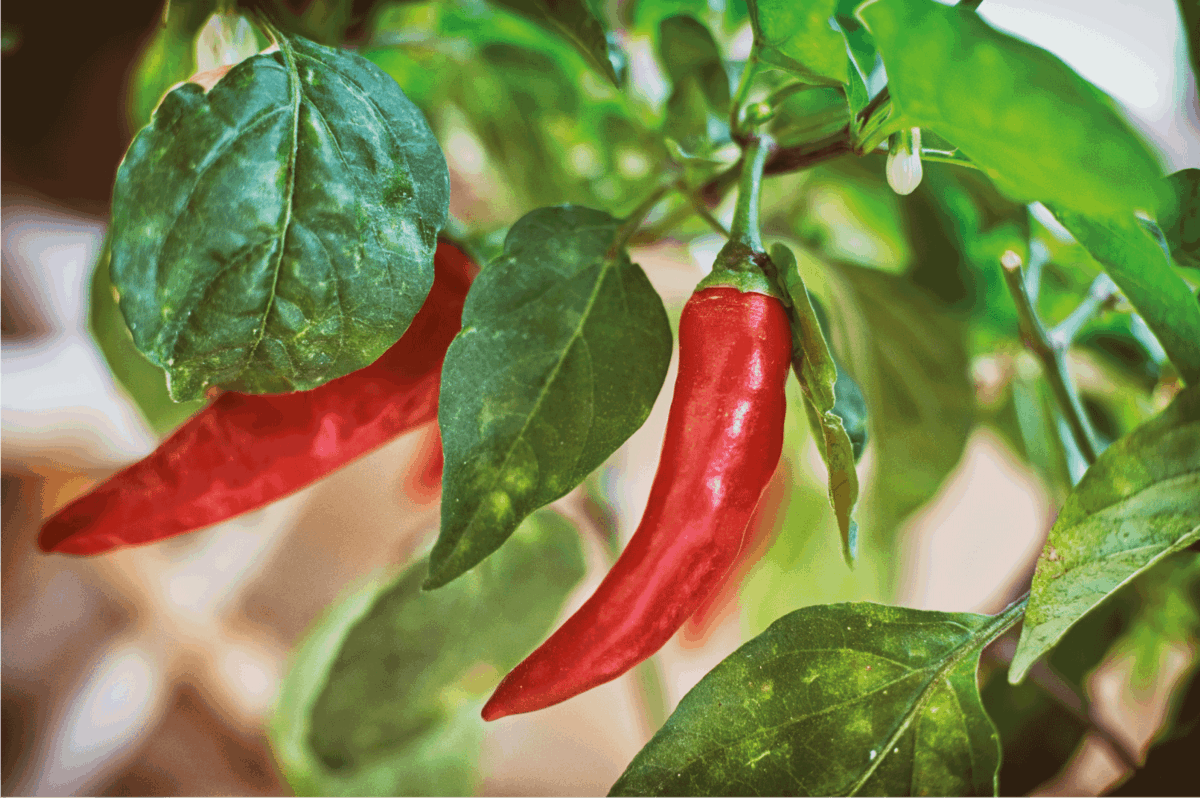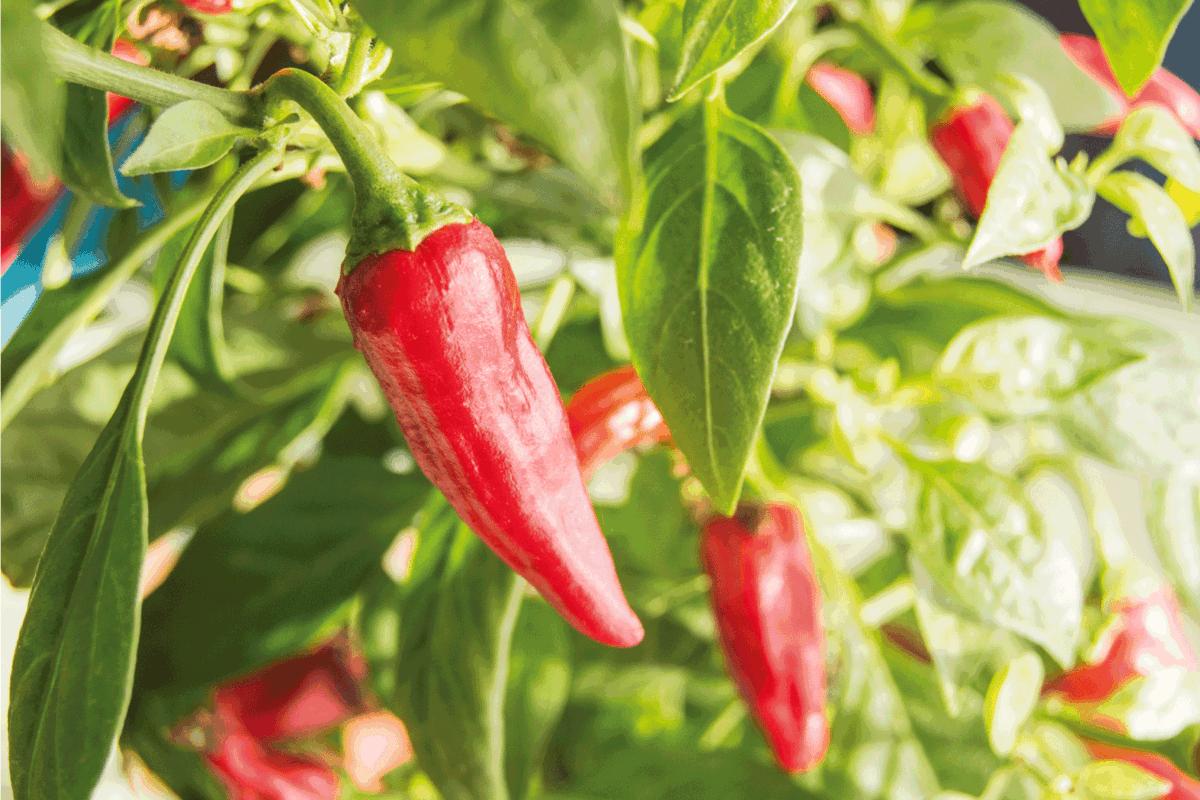Chili plants make excellent additions to your garden if you want to add a little spice to your favorite dishes. Although sometimes, despite your best effort, chili plants struggle to survive. But, don't worry, we have looked into this very topic, so we can help you figure out why your chili plant is dying and what you can do about it.
Chili plants are relatively easy to take care of once their roots are established. But, that doesn't mean they will always thrive. Here are the most common reasons why chili plants start to die:
- Improper watering
- Too much sun
- Transplant shock
- Overfertilization
- Disease or pests
Most likely, one of the above problems is the reason your chili plant is dying. Once you identify the issue, you can work on restoring the plant to its former health.
Many people love to grow chili peppers in their gardens. Sometimes they thrive, and sometimes they don't. If your chili plant looks a little ill, you probably still have some questions. Keep reading to find out about these chili plant problems and how to fix them.
![Spicy and hot flaming red chilli growing in an organic vegetable garden. Why Is My Chili Plant Dying [A Look At The 5 Most Common Reasons]](https://gardentabs.com/wp-content/uploads/2021/08/Spicy-and-hot-flaming-red-chilli-growing-in-an-organic-vegetable-garden.-Why-Is-My-Chili-Plant-Dying.png)
Reasons Why Your Chili Plant Is Dying
Just like with any plant, there are various reasons why your chili peppers look sick. Let's take a deeper look at the most common problems associated with chili plants.

1. Improper Watering
The most common reason chili plants die is improper watering practices. Watering your chili too much or too little can both contribute to an unhealthy plant. A plant can not survive without water. But, too much water can also kill your plant. You must find the perfect balance for your chili plant.
Too little water
A sign of too little water is wilted dry leaves or discolored tips. This is a very common problem in container chili plants. If you suspect your plant is underwatered, check the soil. Stick your finger or a moisture meter into the first two inches of soil near your plant. If the soil is dry, your plant needs water. A proper watering session may be enough to revive your dying chili. If your plant constantly has dry soil, you can add a layer of mulch. Mulch helps soil retain moisture and slows down evaporation.
If you already grow chili plants in outdoor containers, you may want to start growing them inside too. Read this article for more information: How To Grow Chilies In Pots Indoors.
Too much water
Your chili plant may also be dying because of too much water. Chili plants getting too much water typically exhibit the same symptoms as plants that aren't getting enough water. The key difference to look for is oversaturated soil.
A water-logged chili plant will eventually get root rot. Root rot prevents plants from absorbing the nutrients they need to survive. If you catch a chili plant in the beginning stages of root rot, stop watering and add a layer of compost to help restore lost nutrients. Make sure you always plant chilis in well-draining soil to prevent future cases of root rot.
How Often Should I Water My Chili Plants?
We recommend thoroughly watering your chili plants when the first one or two inches of soil are dry. During dry spells, you may have to water every day. In cooler seasons, you may only need to water every two or three days. Use the moisture level of the soil as a watering guide.
XLUX Soil Moisture Meter
Here is an affordable moisture meter you could use to help you know when it is time to water. If you are a serious gardener, having this tool is an excellent asset to your harvests. This device accurately measures the water levels of soil. It just may save your chili plants from dying.
Click here to view it on Amazon.
2. Too Much Sun
Since chili plants thrive in warm climates, chances are you grow chilis in an area that receives a lot of sunshine. However, too much sun may be the reason your plant is dying.
Excessive sun increases transpiration and decreases the amount of water a plant uses for growth. Too much sun also burns leaves and prevents photosynthesis, leading to a dying plant. If you notice dark or faded spots on the chili leaves or drooping leaves at midday, then your chili plant is probably getting too much sun.
To combat this problem, install a sunshade over your garden. If your chili is getting too much sun, your other plants are probably getting too much sun too. For container chilis, you can move them to a more shaded spot during peak sunlight hours.
3. Transplant Shock
Transplant shock is common in chili plants that were just moved outdoors or replanted. If you immediately notice your chili plant dying after either of these practices, then your plant is most likely suffering from transplant shock. Sometimes it is difficult for chili plants to adjust to new environments properly. To make transplanting easier and prevent transplant shock, make sure to:
- Thoroughly water after planting to help the roots settle into their new placement
- Hold off on fertilizing for a few days
- Harden your plant outside before you plant it
- Handle the delicate root system carefully
- Make sure the new location has the right conditions for the chili plant
Is It Normal For Chili Plants To Wilt After Transplanting?
A little bit of wilting is normal after transplanting chili plants. It is stressful for any plant to be uprooted and placed somewhere else. However, a healthy chili plant rebounds from transplanting within a few days. If you continue to notice signs of distress after more than a few days, then your chili plant could be experiencing transplant shock.
Many gardeners transplant a variety of plants. If you want to know about transplanting peonies, read this article: When To Transplant Peonies.
4. Overfertilization
Chili plants are sensitive to fertilizer. If you frequently fertilize your chili plant and notice it has stopped growing, has excessive leaf growth with few blossoms, or the leaves are turning yellow, then it is probably overfertilized. A build-up of salts in the soil from excess fertilization burns the roots and causes the chili plant to eventually die.
Fertilizer burn is hard for chilis to recover from. But, if you catch it early enough, you may be able to save your chili plant. For container chilis, flush the soil multiple times with water to wash away the chemical build-up. For chilis in the ground, you should also try to flush the soil. However, it is more difficult since the water can't drain. In addition, prune back some of the chili plant branches. This helps decrease the stress on the root system to give the plant a better chance of recovery.
5. Disease Or Pests
Diseases and pests cause a wide range of symptoms in chili plants. Here are some key signs your plant suffers from a disease or pest problem:
- Discolored leaves
- Curling/distorted/wilting leaves
- Browing stems
- Slow growth
- Holes in leaves
Here are the most common pests and diseases that affect chili plants:
- Slugs/snails
- Aphids
- Flea beetles
- Pepper maggots
- Bacterial leaf spot
- Bacterial soft rot
- Anthracnose
- Bacterial wilt
If you don't suspect a watering or sun issue, and you notice pests or diseases appear on your chili pepper, then you must identify the problem and try to get rid of it to save the plant's life. You can try to spray your plants with natural or chemical insecticides/fungicides. In extreme cases, there may be nothing you can do. You should get rid of your chili plant before it infects more of your plants.
If your chili plant has black aphids, read this article to learn how to get rid of them: How To Get Rid Of Black Aphids [A Complete Guide]

Why Are My Chili Plant Leaves Drooping?
One common sign of a dying chili plant is drooping leaves. There are multiple reasons a chili plant has dropping leaves, as we talked about above. The most common reasons for drooping leaves in chili plants are:
- Lack of water
- Too much water
- Too much sun
- Pests
- Disease
Since drooping leaves are associated with almost every chili pepper plant problem, you must look for further clues to determine what is wrong with your specific plant.
How Do You Revive A Dying Chili Plant?
If you don't know what is wrong with your chili plant, then here are a few steps to troubleshoot the issue and attempt to revive it:
- Prune back wilted/dead leaves
- Check soil moisture levels
- Thoroughly water if the soil is dry
- Look over the plant for pests like aphids and beetles
- Make sure it's growing in a hot enough environment
Save Your Chili Peppers
If your chili plants are dying, try your best to determine the cause. Then, develop a plan of action to bring your plant back to life. With proper maintenance, care, and the right growing conditions, your chili peppers can thrive!


Chilli plant daiying
Good